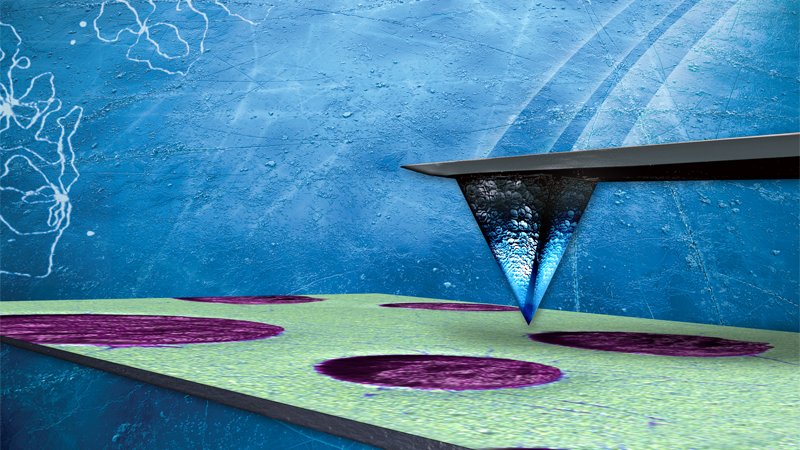Piezoresponse Force Microscopy (PFM)
Piezoresponsive materials are substances that undergo mechanical deformation in response to an applied voltage. The properties of piezoresponsive materials make them useful in a wide range of areas, from microelectromechanical systems (MEMS) to biosensors.
Ferroelectric materials are a subset of piezoelectrics that have particularly advantageous functional properties. As process control improves and fabrication of small volume ferroelectrics becomes more common, researchers have discovered that the physical characteristics of these materials change as they shrink. Piezoresponse Force Microscopy (PFM) enables high-resolution nanoscale characterization of piezoresponsive materials and topographical imaging using Contact Mode scanning. Using Bruker’s NanoMan and NanoPlot software packages, users can also perform Nanolithography using PFM.
We are very excited about our recent Nature Communications article featuring piezoresponse force microscopy (PFM) on a 2D material. This is the latest of over 20 publications from MNRF in the last two years enabled by our Dimension Icon. Those articles were published in prestigious journals including Science, Nature Communications, Advanced Materials, ACS Nano, etc. I believe MNRF keeps getting outstanding data from this system, in part, due to its flexible electrical modes, impressive stability, and ease of use with PeakForce Tapping. When required, Bruker’s support has been excellent.
Dr. Chenglong Xu, MicroNano Research Facility, RMIT University, Melbourne, Australia


